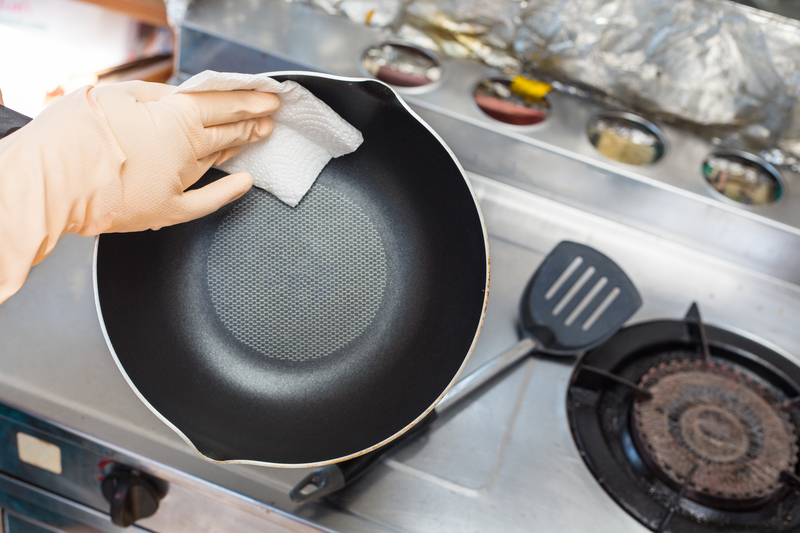Expert Guidance on Damage-Free Washing of Sofa Covers
Posted on 05/10/2025
Expert Guidance on Damage-Free Washing of Sofa Covers
Preserving the pristine look of your furniture depends greatly on maintaining sofa covers without damaging their fabric or structure. In this comprehensive guide, we provide expert tips for damage-free cleaning and washing of sofa covers. Whether you own slipcovers made of cotton, linen, microfiber, or synthetic blends, the right cleaning techniques can dramatically extend their life and freshness. Read on to discover methods, products, precautions, and the best washing practices for sofa covers that keep them looking new!

Why Proper Sofa Cover Cleaning Matters
- Prevents premature wear and tear: Harsh washing can break down fabric fibers.
- Protects colors and patterns: The right washing approach prevents fading and bleeding.
- Maintains hygiene: Thorough but gentle cleansing eliminates dust, allergens, and bacteria.
- Saves money: Well-maintained covers last longer and delay expensive replacements.
- Enhances aesthetics: Clean covers dramatically elevate the appeal of your living space.
Understanding Sofa Cover Fabrics
Different upholstery fabrics react uniquely to cleaning agents and methods. Before you set out to clean or wash sofa covers, it's vital to identify the material and follow care instructions. Below are some common types of sofa cover fabrics and their typical washing needs:
- Cotton: Usually machine washable, but may shrink if washed in hot water.
- Linen: Needs gentle washing; prone to wrinkling and shrinking.
- Polyester/Microfiber: Durable and resilient to washing but avoid high heat drying.
- Velvet: Requires extra care; professional cleaning is sometimes necessary.
- Blends (Cotton-poly, etc.): Follow the stricter care recommendation of the blend.
Decode Sofa Cover Care Labels
Always start by checking the care label attached to your sofa cover. Symbols and instructions provide washing guidance specific to the material and construction. Here's what common labels mean:
- Machine Washable: Safe for washing in a machine, following recommended settings.
- Hand Wash Only: Requires gentle washing by hand; avoid wringing or twisting.
- Dry Clean Only: Should not be washed at home; risk of shrinkage or color loss.
- No Bleach: Avoid using chlorine and harsh whitening products.
Damage-Free Washing of Sofa Covers: Step-by-Step Process
Let's review a systematic approach to washing sofa covers without damaging them. Whether you're using a washing machine or hand washing, follow these essential steps for a professional, safe clean.
1. Pre-Wash Preparations
- Vacuum: Before removing covers, vacuum thoroughly using a brush attachment. This removes dust, crumbs, pet hair, and other debris that could cause further soiling or abrasion during washing.
- Treat Stains: Spot-clean stains right away with a fabric-safe stain remover. Test any cleaner on a hidden section first. Gentle dabbing--not rubbing--helps prevent fiber damage.
- Close Fasteners: Zippers, snaps, or Velcro should be secured before washing to prevent snagging and distortion.
2. How to Machine Wash Sofa Covers: Safe Techniques
-
Water Temperature:
- Use cold or lukewarm water (never hot) to prevent shrinking or fading.
-
Detergent:
- Mild, liquid detergents are preferred for all covers. Avoid bleach and strong chemicals.
-
Gentle Cycle:
- Set your machine to the delicate or gentle cycle to minimize agitation and fabric stretch.
-
Separate Washing:
- Wash covers separately from heavy or abrasive items to avoid pilling and wear.
-
Inside-Out Washing:
- Turn covers inside out to protect color and patterns from rubbing against other surfaces.
3. Hand Washing Sofa Covers for Maximum Care
For delicate fabrics or covers labeled "Hand Wash Only," proceed with extra caution:
- Fill a basin with cool to lukewarm water and add a small amount of mild detergent.
- Soak and gently agitate covers with your hands--never scrub or wring fabric.
- Rinse thoroughly until all detergent is removed, then gently press (not twist) out excess water.
4. Best Practices for Drying Sofa Covers Without Damage
- No Tumble Drying on High Heat: High temperatures can shrink, fade, or warp covers. If machine drying is allowed, use the lowest heat setting.
- Air Dry Preferred: Lay covers flat on a clean, dry towel or drape them over a clothes rack away from direct sunlight. This technique prevents shrinkage and fading.
- Straighten Seams and Corners: While still damp, reshape covers and stretch seams gently to avoid a tight fit after drying.
- Re-cover While Slightly Damp: For a smoother finish, refit covers onto the sofa before they're completely dry. This helps minimize wrinkles and ensures a snug, tailored appearance.
5. Dealing With Difficult Stains and Odors
When facing persistent stains or odors on sofa covers, consider these damage-free treatment options:
- Baking Soda: Sprinkle on dry covers to absorb odors; vacuum after 30 minutes.
- White Vinegar Solution: Mix equal parts vinegar and cool water; dab gently on the stain, then rinse with plain water.
- Commercial Enzyme Cleaners: Designed for pet stains or biological messes, these break down odor and grime molecules safely.
Key Tips for Long-Term Sofa Cover Maintenance
- Rotate cushions and covers regularly to ensure even wear and sun exposure.
- Clean up spills immediately to prevent stains from setting into fibers.
- Limit sun exposure which can cause fading--use curtains or UV-blocking window film where possible.
- Avoid harsh chemicals or abrasive sponges, which can weaken or fray fabric over time.
- Have a backup cover set to help maintain cleanliness without rushed or improper washing.
Common Mistakes That Cause Sofa Cover Damage
To truly ensure damage-free washing of sofa covers, it's equally important to know what NOT to do. Steer clear of these frequent but harmful practices:
- Overloading the washing machine: Not only does this prevent efficient cleaning, but excessive friction can also lead to pilling, distortion, or tearing of the covers.
- Frequent hot water washes: Hot water is the prime culprit for shrinking and fading delicate fibers.
- Bleach and strong chemicals: Even so-called "color-safe" bleaches can degrade fabrics and cause uneven discoloration.
- High speed spin cycles: These can twist and stretch fabric, making covers ill-fitting after drying.
- Incorrect drying techniques: Hanging heavy wet covers can stretch them out of shape; direct sunlight may weaken fibers over time.
Professional Sofa Cover Cleaning: When and Why to Consider It
Sometimes, despite all best efforts, a sofa cover's material or the severity of stains means home washing may not be the safest choice. Here's when professional help is wise:
- "Dry Clean Only" Fabrics: Materials like silk, some velvets, or highly decorative fabrics call for professional solvents and equipment.
- Persistent or Set-In Stains: Specialists use advanced stain treatments unavailable to households.
- Faded or Aged Covers: Professionals can rejuvenate delicate, older fabrics without risk of tearing.
- Larger Sectional Covers: Oversized pieces that won't fit in household machines are best left to industrial facilities.
Tip: Always use certified upholstery cleaning professionals and ask about their care process in advance.
Recommended Products for Damage-Free Sofa Cover Washing
To further protect your sofa covers and maximize cleaning efficiency, consider these expert-recommended aids:
- Mesh laundry bags: Minimize abrasion in the wash and keep zippers from catching.
- Enzyme-based stain removers: These penetrate organic stains (food, drinks, pet accidents) without harsh scrubbing.
- Wool dryer balls: If using a dryer, these speed up drying and help prevent wrinkles without chemicals.
- Hypoallergenic detergents: Especially important for sensitive skin or allergy-prone households.

Frequently Asked Questions on Sofa Cover Cleaning
Can you wash sofa covers in a 60-degree wash?
No. Most fabrics, especially cotton and blended materials, should only be washed in cold or lukewarm water to avoid shrinking and color loss. Always follow label instructions.
How often should sofa covers be washed?
In most homes, washable sofa covers should be laundered every 3 to 6 months, or more frequently in households with pets, kids, or allergies. Spot cleaning should be done as needed.
Can you iron sofa covers after washing?
Most cotton and linen covers can be ironed on a low heat setting while slightly damp. Avoid ironing microfiber or synthetics, as these can melt or scorch easily.
Conclusion: Sofa Cover Cleaning for Longevity and Beauty
Keeping your sofa covers spotless and intact does not have to be a daunting task. Following expert, gentle methods for cleaning and washing sofa covers ensures fabric integrity, color preservation, and an inviting living environment. The key is to always respect your covers' material, heed care labels, use the right products, and take your time with washing, drying, and spot removal. With the damage-free guidance provided above, you can enjoy clean, vibrant, and long-lasting sofa covers for years to come!
Looking for more advice on sofa cover care? Bookmark this page for future reference or share these essential tips with family and friends!



